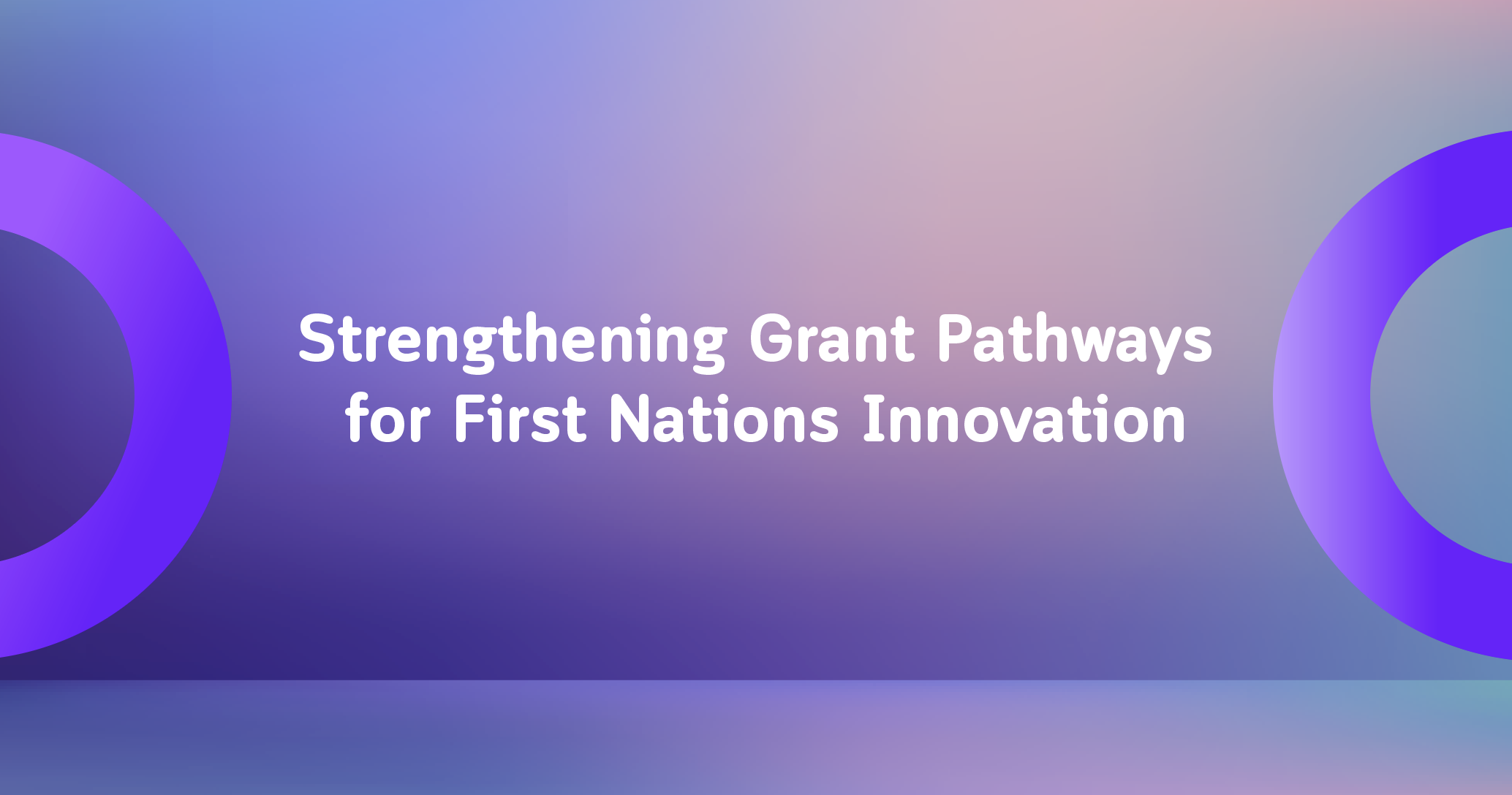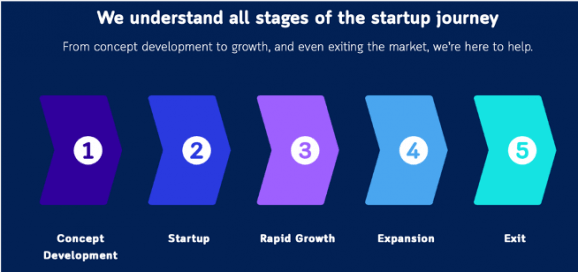October marks Indigenous Business Month – a national celebration of Aboriginal and Torres Strait Islander enterprise, creativity, and innovation. It’s a time to recognise the growing strength of First Nations businesses and the ecosystems that sustain them – from community-led startups to established enterprises creating national impact.
Last month, I attended the Blak Angels Investment Network event – Powering First Nations Entrepreneurship, Capital & Innovation. The energy in the room was inspiring. Conversations focused on how First Nations entrepreneurs are shaping Australia’s innovation landscape through both modern enterprise and deep cultural knowledge.
What stood out most was this: while investment capital is increasingly available through initiatives like Blak Angels, grant funding – especially for early-stage, community-led, or regionally based projects – remains complex and challenging to navigate.
That insight sparked this piece. It explores the current landscape of grant opportunities for First Nations projects – and how emerging programs like the Industry Growth Program (IGP) and National Reconstruction Fund (NRF) can help bridge the gap between capital and capability.
1. Federal Government Opportunities
Indigenous Advancement Strategy (IAS)
Administered by the National Indigenous Australians Agency (NIAA), the IAS funds projects that strengthen outcomes in jobs, education, safety, and governance. These grants are flexible and community-driven – aligning national priorities with local needs.
National Reconstruction Fund (NRF)
The NRF is Australia’s $15 billion investment vehicle, designed to transform and diversify the nation’s industrial base.
It does not have a formal “Indigenous Prosperity Stream,” but its 2024 Investment Policies highlight participation by historically underrepresented groups, including First Nations Australians.
Indigenous-led projects can align strongly with the NRF’s seven priority areas, from renewables and value-add in resources to advanced manufacturing and enabling technologies like AI, robotics, quantum, and biotechnology.
Projects demonstrating both commercial scalability and community benefit are particularly well-positioned to meet the NRF’s national transformation mandate.
Industry Growth Program (IGP)
Launched in 2024, the IGP complements the NRF as a practical grant pathway for innovative SMEs.
It offers up to $5 million in matched funding (50:50 cash contribution) for commercialisation and growth in NRF priority areas.
The IGP has no dedicated Indigenous stream but tracks Indigenous ownership and encourages diverse, inclusive business participation.
Every applicant completes an Advisory Service stage, where a growth adviser provides tailored support—a key capacity-building step for First Nations ventures.
In short, the IGP doesn’t guarantee funding but gives Indigenous-led innovation a strong leg up to scale commercially.
2. State and Territory Programs
Queensland:
– First Nations Business Acceleration Program – providing grants and tailored advisory support to help Aboriginal and Torres Strait Islander businesses scale, innovate, and access new markets.
– Indigenous Workforce and Skills Development Grant – funding locally designed training and employment projects that strengthen job pathways and build community capability. (This program was funded until June 2025.)
Northern Territory:
– Aboriginal Investment NT – Business Grant Program – provides grants to Aboriginal-owned businesses in the NT to support start-up, growth, capability, and innovation. For example, in Round 3 the program offered up to $150,000 for eligible businesses.
– Northern Territory Remote Aboriginal Investment (NTRAI) – a large-scale agreement between the federal and NT governments and First Nations peak bodies to invest in remote Aboriginal communities. While broader than business grants, it covers capability, employment, and innovation in remote settings, with AUD $842.6 million allocated over six years (commencing July 2025).
New South Wales:
– Aboriginal Economic Development and Business Growth Program – providing funding and tailored support to help Aboriginal businesses and organisations develop business plans, build capability, and scale operations. Grant amounts typically range from $100,000 to $250,000, with a focus on long-term economic participation and sustainability.
– Cultural and Economic Development Uplift Pilot Program – supporting Aboriginal-owned Registered Training Organisations (RTOs) to deliver culturally grounded training programs that enhance skills, capability, and economic outcomes for Aboriginal communities.
As of October 2025, there is no published information confirming continuation of the NSW Business Growth or Capability Support programs into 2025–26. Applicants should check with the relevant NSW Government agency for updates.
Western Australia:
– Local Capability Fund – supporting Aboriginal-owned enterprises to scale operations.
– Aboriginal Ranger Program – enabling land and sea management, biodiversity, and cultural heritage projects.
3. Philanthropic and Corporate Initiatives
A growing number of philanthropic and corporate programs have historically supported First Nations–led innovation, enterprise, and community development. While active funding rounds are not currently visible, several organisations continue to influence the space through partnerships and advocacy.
– Minderoo Foundation and Paul Ramsay Foundation – have previously supported systems-change programs and place-based initiatives for Indigenous empowerment and employment. These foundations have had active programs in the past, but as of October 2025, no open funding rounds are publicly listed.
– BHP Foundation, Rio Tinto, and Fortescue – have historically invested in Indigenous employment, education, and enterprise programs (such as Rio Tinto’s First Nations Partnership Framework and Fortescue’s Billion Opportunities Program). These foundations have had active programs in the past, but as of October 2025, no currently open funding initiatives could be identified.
4. Making Your First Nation Grants Application Stronger
Many First Nations organisations and entrepreneurs have innovative, high-impact ideas – but the grant process can feel daunting. Here are strategies to stand out in competitive programs like IGP or IAS:
✅ Start with community-led design. Funders look for projects co-created with and for the community.
✅ Demonstrate cultural governance. Show how decision-making reflects local leadership, accountability, and traditional knowledge.
✅ Align with NRF priorities. Frame your innovation within a recognised sector (e.g. renewables, resources, enabling tech).
✅ Leverage partnerships. Collaborations with universities, corporates, or regional councils can meet co-funding requirements and strengthen delivery.
✅ Show dual impact. Balance the commercial case with measurable cultural, social, and environmental benefit.
✅ Tell a compelling story. Funders want to understand why it matters – who it serves, and how it creates enduring change.
5. The Role of Allied Grants
At Allied Grants, we work with innovators, researchers, and community organisations to help shape funding-ready projects that align with government and industry priorities.
For First Nations organisations, this often means aligning cultural and social goals with funder frameworks while keeping projects authentically community-driven.
We help applicants:
-
Map funding pathways across IGP, IAS, and state programs
-
Build grant and investor readiness
-
Craft compelling narratives that show both innovation and impact
Whether your initiative is in enterprise, health, environment, technology, or manufacturing, funding pathways exist when the project emphasises capability, commercialisation, and community benefit.
Closing Thought
Empowering innovation through First Nation grants requires more than capital – it needs capability, confidence, and culturally grounded partnerships.
Programs like the Industry Growth Program and National Reconstruction Fund offer new pathways to scale Indigenous innovation, but success depends on more than eligibility. It rests on how well projects connect commercial outcomes to cultural integrity and long-term community prosperity.
As we celebrate Indigenous Business Month, it’s important to strengthen access to grants and co-investment. Doing so unlocks a new generation of First Nations ventures combining traditional knowledge with modern innovation. These initiatives build prosperity that is shared, sustainable, and deeply Australian.






